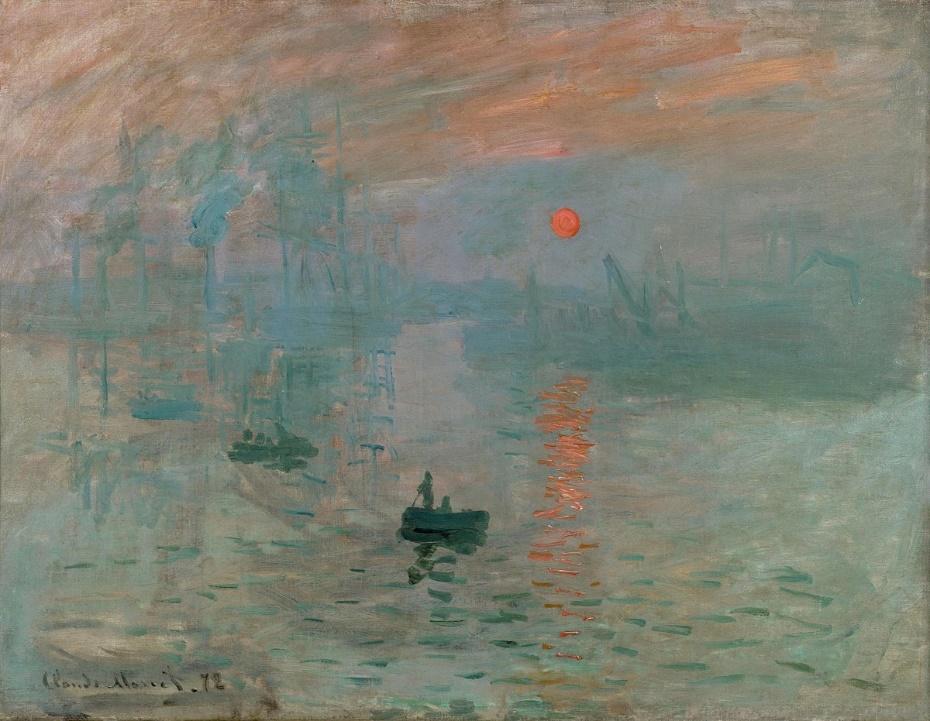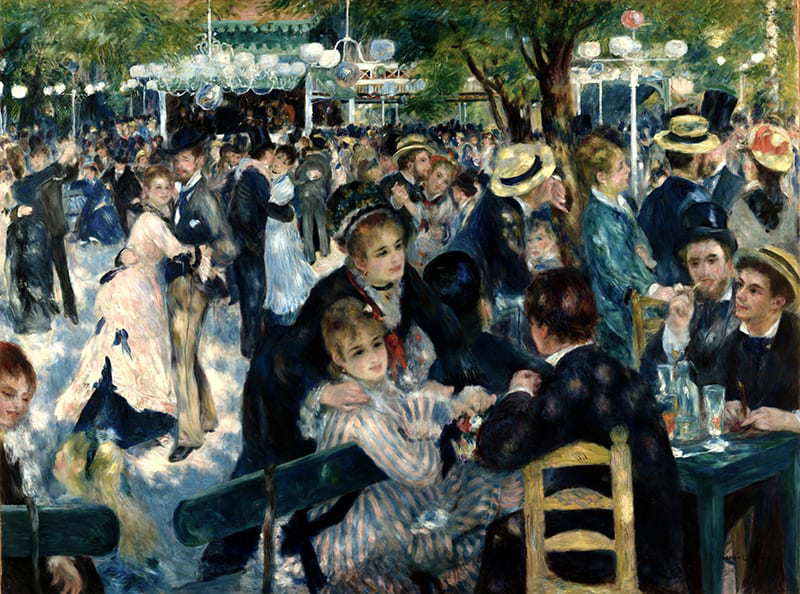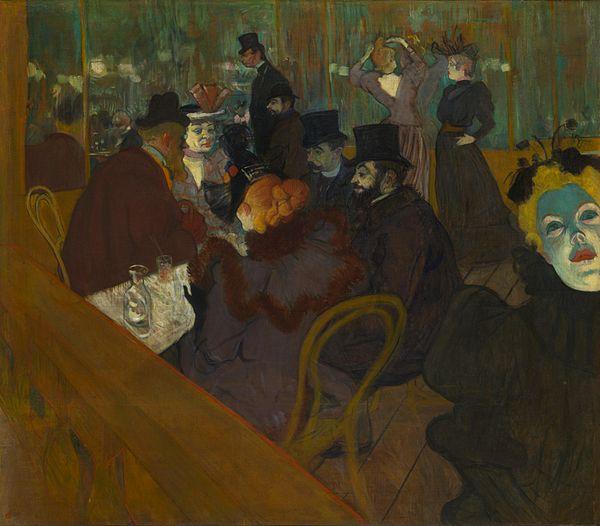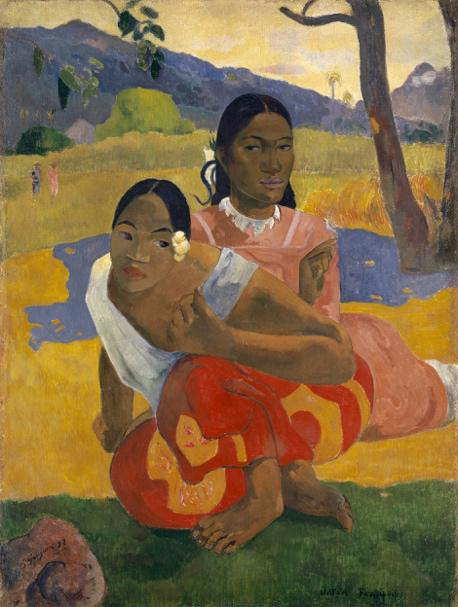
French art of the 19th century could be considered the century of Impressionism. The movement took Paris by storm and many French artists in the area were under its influence.
Separated by Impressionist and Post-Impressionist eras, here are nine of the most famous French artists of the 19th century.
Impressionist Artists
Impressionism came after realism as a way to capture the world as one perceived it or as an “impression” of the world around them. Impressionist artists often painted outdoors or in “plein air” and played with light in new and exciting ways. In short, nothing says 19th-century French art quite like Impressionism.
Claude Monet

Known for his countless paintings of water lilies that would help define his career, it’s impossible to talk about Impressionism without mentioning Claude Monet. One of his masterpieces, Impression, soleil levant, shown in 1874 was one of the first to be called an Impressionist work.
His distinct color palette and signature brushstrokes found a way to capture light in ways that hadn’t been done before. Monet is known as the father of Impressionism and his “impressions” of the French countryside are incredibly important to 19th-century art in the country.
Edgar Degas

Get the latest articles delivered to your inbox
Sign up to our Free Weekly NewsletterEdgar Degas considered him a Realist painter. This means he attempted to paint things as they were, versus how he perceived them to be. Still, the art world considers him an Impressionist artist as he adopted the loose strokes and play on light.
His favorite subject was dancers and he’s famous for his paintings of ballerinas in motion. Degas was able to express their movement in such a unique way and makes viewers feel as though they were in the rehearsal room with them.
Edouard Manet

As Realism moved into Impressionism, Edouard Manet was one of the pioneers of this transition. He was one of the first to paint modern French life, a subject that would inspire many of 19th-century French artists to come.
He sparked controversy when he presented Olympia, featuring a fellow artist Victorine Meurent in the nude. But the nudity wasn’t the main cause for concern. It was assumed that she was portrayed as a prostitute. Rather risqué, even for 1860s France.
Auguste Renoir

During the late 1800s, Pierre Auguste Renoir painted some of the most iconic Parisian city scenes ever to be put on canvas. Notably, his piece called Bul du moulin de la Galette shows 19th-century working-class people dancing, eating, and enjoying their Sunday afternoon. It is a gorgeous peek into what life must have been like back then.
Camille Pissarro

Camille Pissarro could be considered both an Impressionist and Post-Impressionist artist as he contributed to both styles. He often painted cityscapes, similar to the subject-matter of his fellow impressionists and employed the loose brushstrokes that were so criticized when Impressionism first came on the scene.
Post-Impressionist Artists
As a reaction to Impressionism, Post-Impressionism emerged in the 1890s and aimed to capture the artists’ emotional response to the impressions they were painting.
It was still common in Post-Impressionist art to see bright colors and broad brushstrokes but now, symbolism and the artist’s inner thoughts became more important. Post-Impressionism led the way for movements like Abstract Expressionism.
Henri de Toulouse-Lautrec

Toulouse-Lautrec was probably the most famous Post-Impressionist painter while he was alive. Parisians in the 1800s lived lavishly and Toulouse-Lautrec painted these crowded scenes with decadent colors, a master of capturing how it felt to be there among the energy of Paris life. His most famous works are paintings of scenes at the Moulin Rouge.
Paul Gauguin

Paul Gauguin was influential as a French Post-Impressionist for his experimentation with primitivism and color theory. He combined the day-to-day subject-matter, common in Impressionism and Post-Impressionism, with the mythical symbolism of the exotic themes that so interested him.
His piece called When Will You Marry broke the record for most expensive painting when it sold for $210 million in 2015. However, this record has since been outdone but it remains one of the highest prices ever paid for a work of art.
Paul Cezanne

Paul Cezanne was famous for studying a single subject with an intense focus which he depicted in his still-life paintings. His work features distinct technique and, although like many others he was rejected by critics of his day, he would go on to inspire countless artists who came after him.
Georges Seurat

Our final icon of 19th-century French painting is Georges Seurat who took a scientific approach to color theory that was new and exciting in the community. He painted pure colors on the canvas instead of mixing pigments beforehand. From there, he relied on the viewer’s eyes to distinguish color and make sense of the forms. The technique was called pointillism.
If you look closely at his most famous piece, A Sunday Afternoon on the Island of La Grande Jatte, you’ll find that the colors you see up close are different from what you see when you stand back, letting the cones and rods of your eyes do their magic.
Although all of these artists come from either Impressionism or Post-Impressionism and you can see their striking similarities in subject-matter and style, they each also brought something unique and inspiring to the era and were instrumental to French art of the 19th century.
What’s more is that this movement which began among Parisian artists in the late 1800s would spread around the world and inspire countless other masters, leading the way to modern art that would arise in the 20th century.








